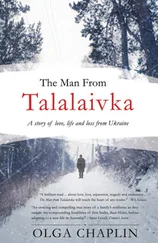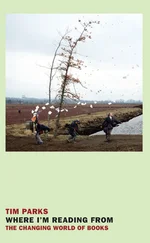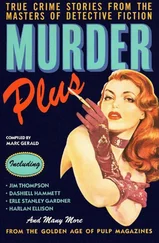We have to fight and throw out the occupiers, not look good for Russian propaganda. According to Russian propaganda, we should throw out our blue and yellow [Ukrainian] flag. Twenty Azov fighters gave their lives for that symbol and we are not going to change it because of Russian propaganda! We are here to stop Bolshevism advancing toward Europe and we are here for a free Europe.
And if and when the Azov Battalion succeed—what then? Dyachenko’s answer sounded rather humdrum and traditionally conservative more than anything. He talked of Polish economic shock therapy and large families, and grumbled that “gay marriage is obviously negative. We stand for the traditional family.” He also spoke of his admiration for Alain de Benoist, the French far-right philosopher, whom I was beginning to realize had fans on both sides of the line.
It is undeniable that, on the Ukrainian side of the war, some politicians and some organizations have their roots in the far right. It is a fact that is used against the country in the info-war, and the negative effect of this in the West is something which many Ukrainians don’t understand. Certain individuals whose political roots go back to the far right have become important in the post-Maidan era, but voters have eschewed extremism more than those in many other European countries. The reason why some individuals and organizations like Azov have been able to flourish is because they are made up of or led by highly motivated figures with a background in groups who were not afraid of violence and especially were not afraid to resort to it during the Maidan period. It is also worth noting that since independence, these individuals and groups had warned that Russia was a threat. Because of their unpalatable political background, their general xenophobia and their devotion to neo-Nazi-style symbolism, this part of their message was lost in the cacophony. However, there is another issue which historians will debate: to what extent did they contribute to a self-fulfilling prophecy? The lionizing of Stepan Bandera and the flying of his red and black flag, especially during the Maidan revolution, did much to alarm and even embitter those in Ukraine whose fathers and grandfathers had fought in the Red Army against his movement. It gave valuable political ammunition to Ukraine’s enemies, and they use it to good effect. The main blame for the Ukrainian war must lie with Vladimir Putin—but such things did not help Ukraine.
At the entrance to the battalion’s canteen, a table was completely covered in colorful children’s drawings and letters. All over Ukraine classes of children are churning them out and they are arriving in bulk to decorate concrete-block checkpoints and frontline positions. The one I picked up read:
Dear Friend
Hello. I am sending a big hello to you from the south of our state, from Odessa. Be brave, stay brave and know we are supporting you and we believe in you. Victory will be ours.
Pupil of Year 7.
Dymitro Mandichenko Odessa
32.
From Amazonia to New Russia
I went looking for the Serbs. I wanted to write about Balkan fighters who, now their own wars were over, were fighting in foreign ones. Serbs have been fighting for the rebels and Croats for the Ukrainians. Divided only by the fact of being Orthodox Serbs and Catholic Croats, they seemed to agree about most things. These fighters hate the European Union, NATO and America and think they are fighting a good Christian fight. They are often connected to small extreme nationalist groups. Sometimes they send one another greetings. To their Serb “friends” a couple of Croats said, “Hope to see you soon!” via YouTube. They were off to Mariupol to join the Azov Battalion.
The Serbs were lying low though. One group had kidnapped a couple from another group with whom they were in conflict. They taped material around the head of one and a blindfold on the other, who was wearing a shirt emblazoned with a Serbian flag and the motto: “Serbian Honor.” Then they triumphantly posted the picture on Facebook. A source in Donetsk suggested I call Erwan Castel, a French volunteer, who might know where they were. He told me he was in a café by the bus station.
When I arrived Castel said that the Serbs (who had kidnapped the others) had indeed just been there, but had left. Anyway, they were, he indicated with a spiraling gesture of his hand, completely drunk. He was not going to give me their numbers. But Castel himself has an interesting story to tell. While few non-Russians have come to fight in Donbass—one reliable estimate in March 2015 put the total number who had passed through on each side at 300—the reason Castel had come to Donetsk tells us much about those Westerners who admire Putin.
Castel had arrived only a few days earlier but, he told me, he had been meaning to come for a long time. Unfortunately, his father had recently died and he had had obligations to discharge before he could travel. And he had, in fact, traveled a very long way. The fifty-one-year-old had, in an earlier chapter of his life, been a French military intelligence officer, but for many years now he had lived in French Guyana, taking people on tours of the Amazon rainforest. When he had not been under the forest canopy he had been following world affairs and had begun to develop an interest in what was happening in Ukraine. He was convinced that the U.S. and the European Union had orchestrated a coup d’état in Kiev with the Maidan revolution in order to install NATO bases in Ukraine. Now, however, in the face of heroic resistance by the people of Donbass against an openly neo-Nazi junta in Kiev, the U.S. and the EU in his view were in retreat and the world order was on the point of change. Today we were witnessing the violent collapse of the liberal system led by the U.S. and the New World Order, he told me. “As a Russian proverb says, ‘When a monster drowns it makes the biggest waves.’”
As he talked he showed me things on his computer such as the blog he had set up in 2014 called Soutien à la rébellion du Donbass (“Support for the Donbass Rebellion”). Its Facebook page had 9,378 members and was tagged: “Anti-globalization movement” and “Novorossiya.” A younger French volunteer sat in silence at the other end of the table. Castel zipped from what had happened in Kosovo in 1999 to theories about CIA-supported Western NGOs aiming to destabilize the former Soviet republics. I was introduced to the concept of “Thalassocracies,” which are “empires of the sea” as the British empire had apparently been and which contrasted with the Russian empire, and then to the geopolitical concept of the evil U.S. seeing the “road to Tehran” leading through Damascus and the “road to Moscow” leading through Kiev. He whipped open his computer again and we looked at maps of NATO in 1990 and in 2009, by which time it included all the former central and east European Warsaw Pact nations, the Baltic states, Croatia and Albania. “Who is the aggressor?” he demanded. “Who is on the offensive? They are at the door of Russia and Russia has no strategic depth. Riga is only 150 kilometers from St. Petersburg. So, Russia is in a defensive posture. It is not a threat.” The government in Kiev “is not Ukrainian. It is a slave of the U.S., and all decisions are,” at which point he picked up his phone and spoke into it: “Hello, Obama, what do we do?” The U.S., he explained, wanted the containment of Russia, to control its frontiers and see the departure of its Black Sea fleet from Crimea. But American plans were being thwarted.
Russia, he said, had no troops in Ukraine, and lies to the contrary had to be stopped. Russia only wanted no NATO on its borders and an economy open to east and west. Castel claimed hackers had discovered that 1,037 Poles and Americans had been killed fighting in Ukraine but these deaths were being hidden. He talked approvingly of Alexander Dugin and his Eurasian vision for Europe and of Alain de Benoist and his ideas about a Europe in which emerging identities such as those of Catalonia, Flanders and presumably Donbass played a new role as the old order collapsed.
Читать дальше












